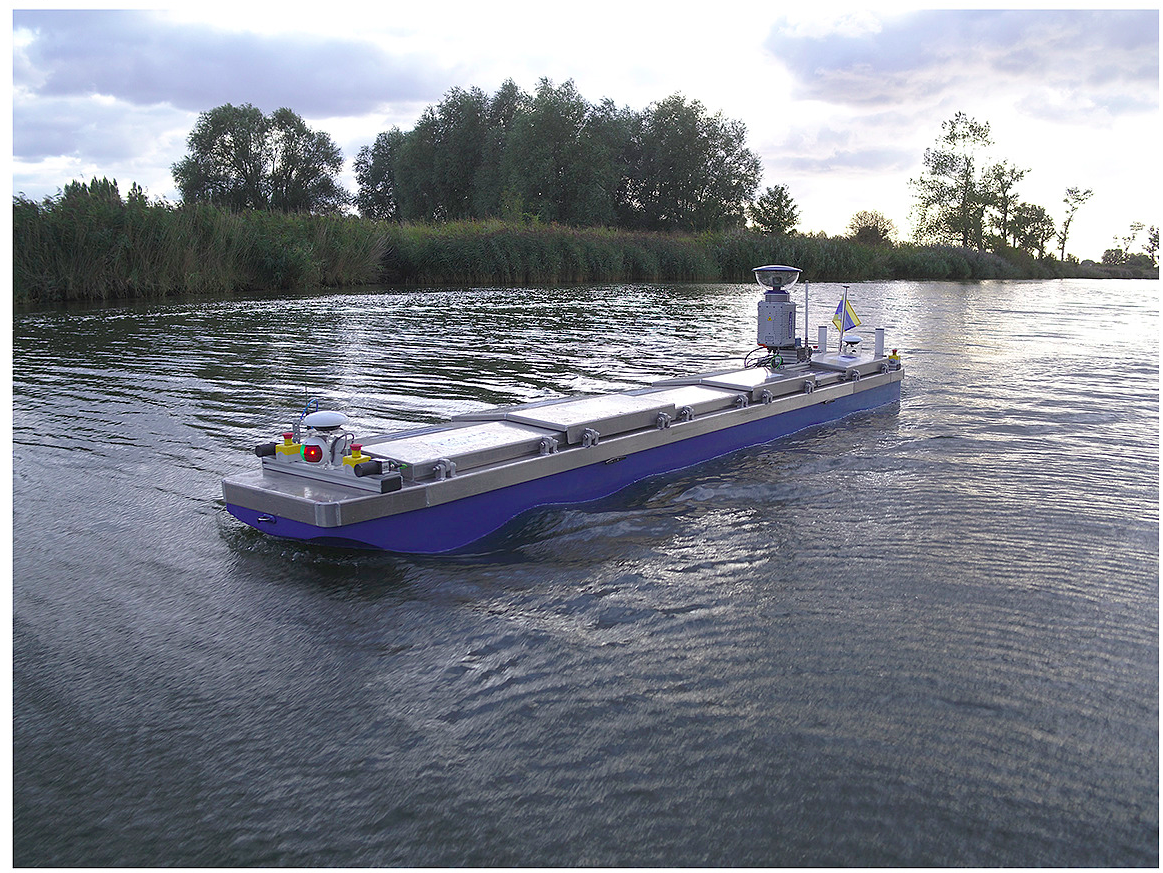An unmanned inland cargo vessel: Design, build, and experiments.

Figure 1b: an unmanned inland cargo vessel.
Abstract
Although road-based freight transport has large external costs, it currently dominates the hinterland cargo transport sector in Europe. An increase of the automation levels of inland cargo vessels could advance their competitiveness, hence unlocking more sustainable inland cargo transport. Moreover, these improvements could pave the way for a potential future paradigm shift towards unmanned inland cargo vessels. Therefore, this study investigates the design of an experimental platform in order to study the feasibility and current or future limitations of unmanned inland cargo vessels. To explore this design, the following three questions were handled:
- How to design an industrially relevant research vessel?,
- How can an unmanned inland cargo vessel interact with or perceive its environment?, and
- How to control an unmanned or autonomous inland cargo vessel?
The answers to these design questions delivered the blueprint to construct a first prototype of an unmanned inland cargo vessel. This prototype performed a set of outdoor experiments to verify and validate the made design choices. The successful execution of these experiments demonstrates that this vessel can serve as an experimental platform for further technological research regarding more automated or unmanned inland cargo vessels and provide fruitful insights for other research domains.
Full reference
Peeters, G., Kotzé, M., Afzal, M.R., Catoor, T., Van Baelen, S., Geenen, P., Vanierschot, M., Boonen, R., Slaets, P. with Peeters, G. (corresp. author) (2020). An unmanned inland cargo vessel: Design, build, and experiments. Ocean Engineering, 201, Art.No. 107056. doi: 10.1016/j.oceaneng.2020.107056 Open Access